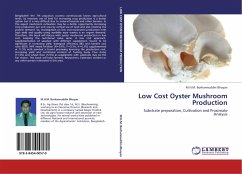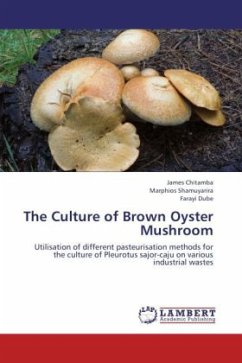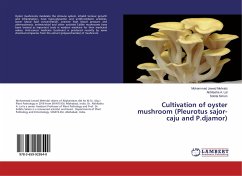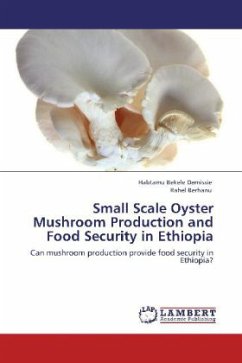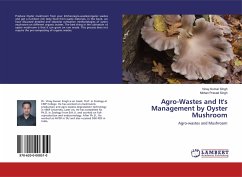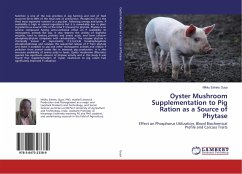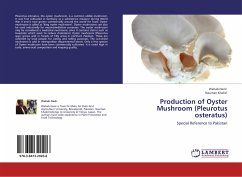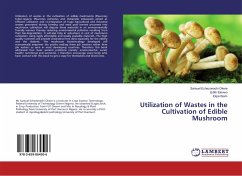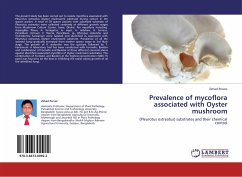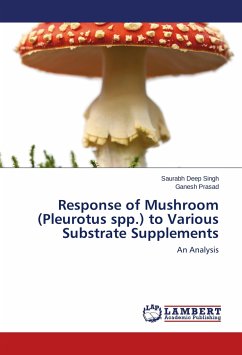
Substrate Influence on Growth and Spawn Quality of Oyster Mushroom
Versandkostenfrei!
Versandfertig in 6-10 Tagen
29,99 €
inkl. MwSt.

PAYBACK Punkte
15 °P sammeln!
Oyster mushrooms (Pleurotus spp.) are popular edible fungi grown around the world. They are known for their good nutrition, economic value, and ability to grow on many types of organic waste. To get good yields, high-quality spawn is very important.In this study, we tested five types of grains-sorghum, wheat, barley, paddy, and millet-to see which one supports the best mycelial growth during spawn production. We measured how far the mycelium grew in each substrate over 20 days.The results showed that sorghum gave the best growth, reaching 5.69 cm. Wheat was close at 5.24 cm, and barley followe...
Oyster mushrooms (Pleurotus spp.) are popular edible fungi grown around the world. They are known for their good nutrition, economic value, and ability to grow on many types of organic waste. To get good yields, high-quality spawn is very important.In this study, we tested five types of grains-sorghum, wheat, barley, paddy, and millet-to see which one supports the best mycelial growth during spawn production. We measured how far the mycelium grew in each substrate over 20 days.The results showed that sorghum gave the best growth, reaching 5.69 cm. Wheat was close at 5.24 cm, and barley followed with 4.98 cm. Paddy showed slower growth at 4.27 cm, and millet was the lowest at 2.77 cm. The differences were significant.Sorghum worked best likely because it has good nutrients, holds moisture well, and allows air to flow, helping the mycelium grow faster. Wheat and barley also did well, but may need small changes to match sorghum's results. Paddy and millet were less effective and mayneed improvement before use.In conclusion, sorghum is the best grain for spawn production and can help farmers get better yields and healthier mushroom crops.



